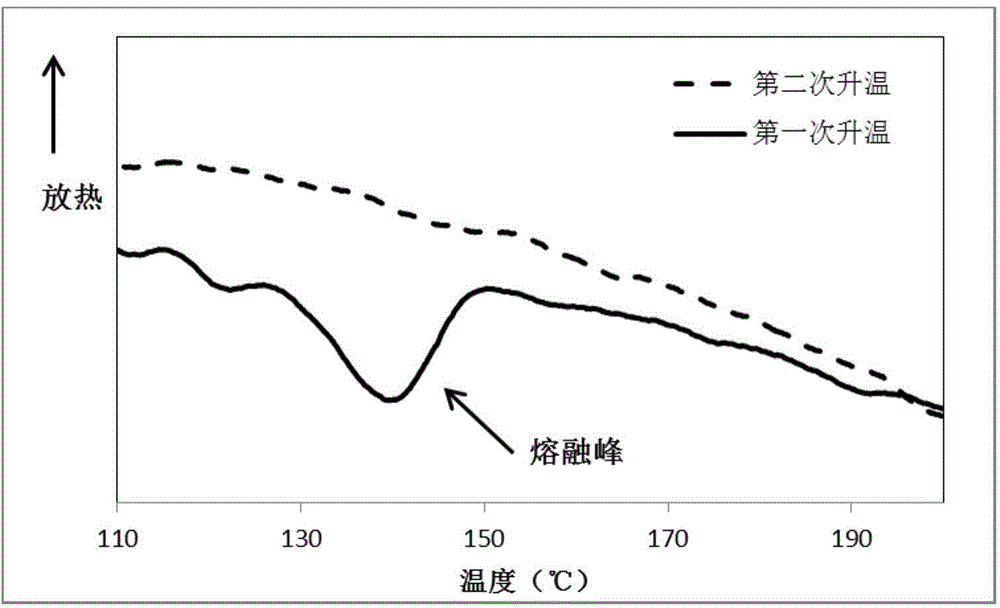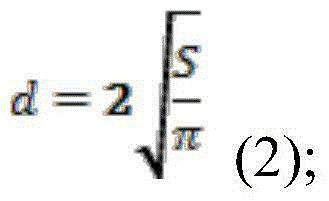Microporous polylactic acid oriented thin film
An oriented film, polylactic acid technology, applied in the field of polymer materials, can solve the problems of poor tensile mechanical properties, deepening color, poor stability of polylactic acid, etc., and achieve the effect of enhancing mechanical properties and improving product color.
- Summary
- Abstract
- Description
- Claims
- Application Information
AI Technical Summary
Problems solved by technology
Method used
Image
Examples
Embodiment 1~5
[0094] The raw materials are extruded and granulated with a twin-screw extruder according to a certain proportion, and the extrusion temperature is 170°C. It can be extruded stably, there is no melted polylactic acid, and the extrusion granulation is colorless and transparent.
[0095] Next, an unoriented film with a thickness of 120 μm was prepared by blow molding through a single-screw extruder. The blow molding temperature is 180°C. Further, in water vapor at 90° C., the unoriented film was simultaneously biaxially stretched 3.3×3.3 times at a stretching rate of 220% / s to obtain an oriented film. The film is colorless and transparent. Table 1 lists the film composition. At 25°C, the properties of each film were measured and listed in Table 1.
Embodiment 6~9
[0099] Embodiment 6~9, comparative example 6~7
[0100] The raw materials are extruded and granulated with a twin-screw extruder according to a certain proportion, and the extrusion temperature is 170°C. Next, cast through a single-screw extruder at a casting temperature of 170° C. to prepare an unoriented film with a thickness of 110 μm. Furthermore, in water at 85° C., the unoriented film was stretched according to the stretching method listed in Table 3 to obtain an oriented film. Table 3 lists the film composition. At 25°C, the properties of each film were measured and listed in Table 3.
Embodiment 10~12
[0102] The raw materials are extruded and granulated with a twin-screw extruder according to a certain proportion, and the extrusion temperature is 170°C. Next, cast through a single-screw extruder at a casting temperature of 170° C. to prepare an unoriented film with a thickness of 130 μm. Furthermore, soak in water at 90°C for 15 minutes. Then, in the air at 95° C., the unoriented film was stretched according to the stretching method listed in Table 4 to obtain an oriented film. Table 4 lists the film composition. At 25°C, the properties of each film were measured and listed in Table 4.
[0103] Table 1
[0104]
[0105] Table 2
[0106]
[0107] table 3
[0108]
[0109] Remarks: successive bidirectional stretching in MD direction first, then TD direction stretching
[0110] Table 4
[0111]
PUM
 Login to View More
Login to View More Abstract
Description
Claims
Application Information
 Login to View More
Login to View More - R&D Engineer
- R&D Manager
- IP Professional
- Industry Leading Data Capabilities
- Powerful AI technology
- Patent DNA Extraction
Browse by: Latest US Patents, China's latest patents, Technical Efficacy Thesaurus, Application Domain, Technology Topic, Popular Technical Reports.
© 2024 PatSnap. All rights reserved.Legal|Privacy policy|Modern Slavery Act Transparency Statement|Sitemap|About US| Contact US: help@patsnap.com










